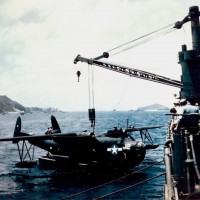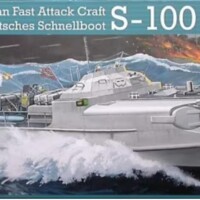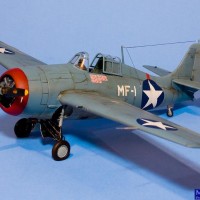1:8 1917 Excelsior Board Track Racer-3D Scratch Build
Background
Like other manufacturers, Ignatz Schwinn, who acquired Excelsior in 1911, believed racing improved motorcycle engineering through track testing. The visibility of racing success helped sales as well. A machine similar to the one I built won the American National Championship on dirt; 300 miles in 3 hours, 29 minutes and 51.4 seconds, an average just over 85 MPH. The 1916 and 1917 Excelsior catalog boldly cited the achievement.
In the Board Track racing era, about 1909 to 1915, motorcycle racing was a mainstream spectacle. The board track or motordrome was designed as a racing venue and was used by both motorcycles and automobiles. Board tracks were constructed of rough cut 2" x 4" and 2" x 2" lumber was used to create the tracks' surface. It's staggering to think of the number of board feet needed to build a one mile track. The corners were banked starting at 25 degrees on the inside of the turn and sometimes reaching a 60 degrees on the outside.
Manufacturers including Harley-Davidson, Indian and Excelsior all had factory racing teams with custom built factory race bikes.
Most motorcycle engineers used cables to control spark advance and the carburetor. Early on, carburetors were so primitive ignitions were favored for speed control; not the best approach. Therefore linkages were used to operate throttle and spark advance. That means twisting both grips at different rates to keep the motorcycle running. Pedals could be used to start the engine but push and pull starting was used as well for these rolling start events. Also note the hand-operated oil pump to lube the engine while racing; all exposed metal that is not painted black is nickel plated.
Since the racers in this era were direct drive (had no clutches) races would run along side the bikes once they were started.
The Build
Last year I was talking to another motorcycle builder at a local model show and we starting thinking it would be really cool if more antique motorcycle model kits existed. I didn't really give it much thought at first, but then decided I'd research the topic a bit.
My relationship with Excelsior-Henderson led me right where I needed to go. So I began to draw up an Excelsior board tracker. Once I had the two-dimensional drawings I pulled that work into Shapr3D and the modeling began.
The 3D print files totaled ten for this build: Main frame, front forks, engine, tires, chains, pedals, and seat. Based on the delicate nature of the bike, I didn't want to try to fit too many pieces for fear of breaking something. Also, no matter how well things fit together in 3D space, they have tendency to not fit so perfect in reality. Tolerances are tricking.
This method of construction did require some laborious masking and painting. All the oil lines, gas lines and linkages are stainless steel jewelry wire. This was a great find for me since it's already chrome and fairly flexible.
I created the decals with Adobe Illustrator and ordered them from Fusion Scale Graphics (https://fsdecals.com/) they produce great custom decals and didn't disappoint. I highly recommend.
Wrap Up
With all the tools at our disposal today to build what we conjure up in minds I enjoy seeing my concepts come to reality. Building without directions and having to super glue resin parts together cause a guy to build the model over and over in your head before putting the actual pieces together.
Hope you enjoy my 1:8 1917 Excelsior as much as I enjoyed creating it. Comment away and keep building.





















@coondog no words Matt. Absolutely fantastic!
Incredible model, methods and subject. Many years ago a local shop had an Excelsior inline four that was mated to a Cleveland transmission. Can only imagine what that felt like in a bank on those wooden railways, can't even imagine having faith in the tires of the day on that kind of surface, but somehow those guys did it.
Fantastic work, Matt, and really interesting history.
Exquisite!
This is a really excellent model, and I'm not a motorcycle modeler. Beautiful work.
Matt Minnichsoffer (@coondog)
This is your best work yet. These scratch built 3D printed bikes you are making just keep getting better and better, which is already setting the bar much higher than the rest of us mortals could ever do. You my dear friend have a serious set of skills. I really like how the white tires set off the appearance. I also enjoyed reading the article. I can tell you have a splendid history with the company, and this was a labor of love.
This article, was very interesting and it reminded me of several things in my early childhood growing up in Daytona Beach. We had an actual wooden "board track" that still existed when I was a little boy near the Boardwalk on the beach side. By this time it was being used to race go carts. During the annual Bike Week events, there would be several fearless motorcycle dare devils who would race on the track. It was a small track when compared to the ones you talked about. I believe it was all torn out by the end of the 1960's and another set of buildings were built on the site.
On my Dad's side of the family, (including myself) we have been riding motorcycles from the time we could barely walk. Ironically, there's a spot in a little town in PA, where all three of us, Grandpa, Dad and myself all wrecked our motorcycles in the exact same spot on a curve within inches of each other. The only thing that separated us was the years and a few inches. When I wrecked my Dad and Grandpa came over running to see if I was OK. I didn't have a scratch and was just fine... Then they both started laughing out loud. Hysterically loud, and you could tell they were enjoying the moment.
I asked them what they thought was so funny about me breaking my bike in the wreck... and they pointed at some scratches in the retaining wall that I had just met, almost head on. There were two other and significantly older sets of scratches. Both were obviously caused by some sort of collision with a vehicle.
They were standing there side by side and my Dad pointed at one and said something like this: "See that set of marks on the wall ? That's from your Grandpa way back in 1936. He was on an Indian. That set of marks right next to it are mine. I was riding a Harley and it was sometime around 1958. Now here we are in 1978 and you have just carried on the family tradition. Welcome to the club son !. We were doing the same thing as you were, and ended up with the same results.".
Seriously this is a true story. I guess the saying is true about the apple falling not too far from the tree. 😉
I look forward to your next masterpiece. It's going to be epic !
@lgardner thanks as always for your comments my friend. Storybook story as well.
Absolutely wonderful job, Matt!
Very impressive, Matt @coondog
Great 3D design and excellent finish.
That is jaw-dropping work, Matt @coondog! 🤩 That is the work of a master modeler, for sure. 🏆
Can you imagine riding one of those racers around those board tracks?!? I'm thinking now of splinters and where they might end up when a rider went down! 😳
@garybrantley I couldn’t imagine going 100 mph on a bicycle. Thanks so much for the kind words.